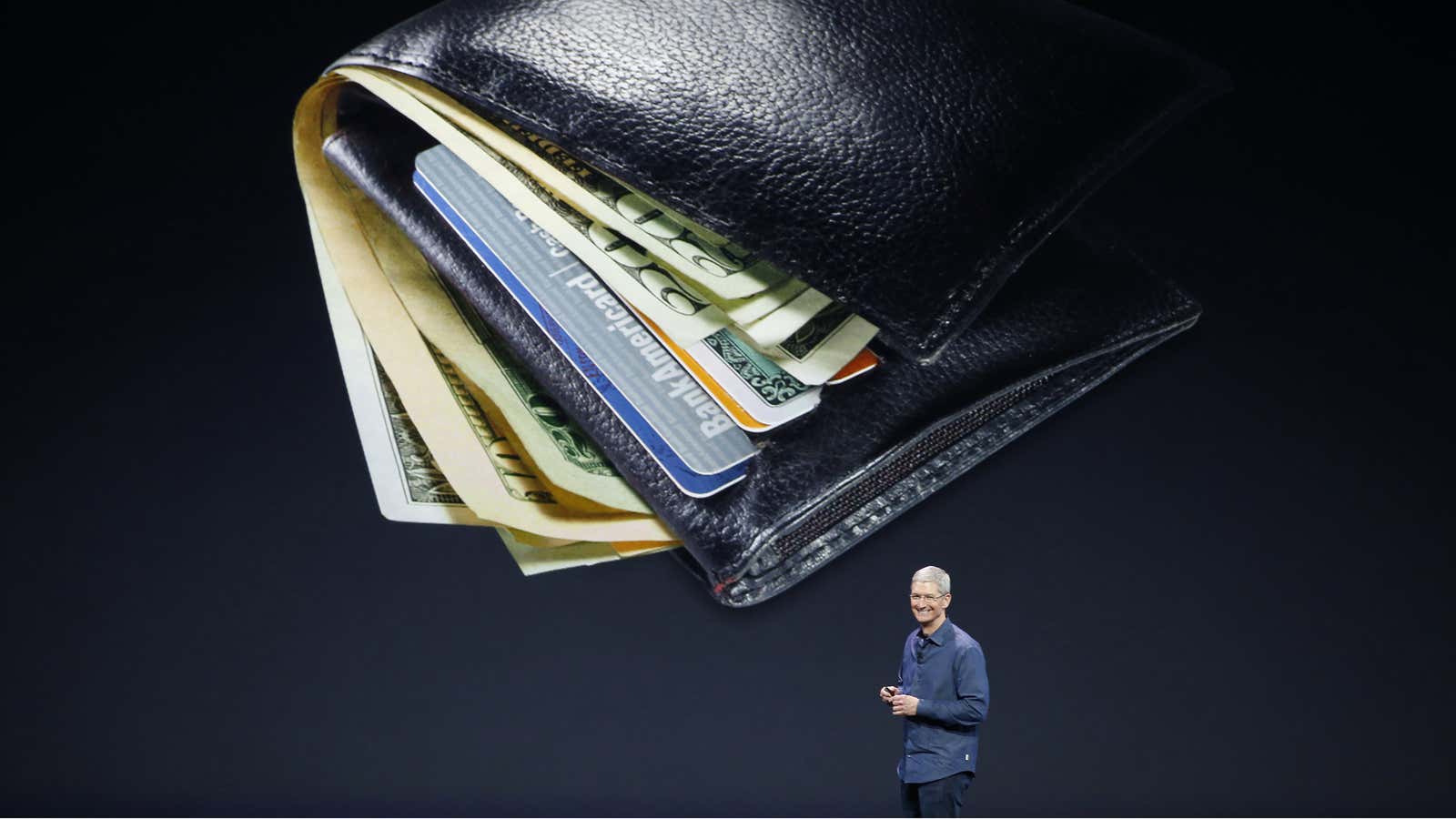This item has been corrected.
Apple Pay could certainly be the nail in the wallet’s coffin, similar to what the iTunes model was for music when it was introduced in 2001. And this on the heels of the Twitter “buy” button, another move by a major tech titan to occupy the payments space via a mobile device. These payment systems are built to integrate with daily activity for many consumers, a useful approach that however will not work in developing nations. As Apple Pay is rolled out over the coming months, the service will essentially encourage consumers t0 expedite purchases by making credit card payment a process that can be done entirely via one’s mobile device.
Western nations’ consumers have easy access to banking facilities, but this is not the case for emerging markets. An often overlooked barrier to entry is that payment structures can pose an obstacle to an interested consumer. Upstream’s “The Next Mobile Frontier Report” revealed that more than one in five (21%) consumers in developing nations do not have access to credit or banking facilities, negating the possibility of a typical credit card payment service. These nations clearly hold great opportunities, but require a vastly different approach. Given that Apple Pay is designed to tie to credit card companies and accompanying banking facilities, Apple Pay in emerging markets would likely need to also focus on service providers and billing cycles on a location-by-location basis, since one credit card or service does not uniformly work for all consumers.
Localization matters
Given the lack of traditional payment structures, a localized payment approach is sorely needed. We’ve found that the preferred way to purchase content for nearly half (44%) of Nigerian consumers is through their mobile operator. Across Nigeria, Brazil, India, China and Vietnam, 19% of consumers say they would like to purchase mobile content using a credit card and 10% would do it via a debit card. In the same way Apple is looking to shift mobile payments through its payment platform, it could make a powerful change in emerging markets by teaming with local operators whenever necessary, and Apple Pay strictly when appropriate.
In Nigeria, many consumers look to their mobile phone providers specifically for payment purposes, while in China (23%) and Brazil (31%) consumers prefer to use a credit card. Unlike the way Apple Pay has been unveiled universally across the US, tailoring the service to local needs and desires will be far more important.
Where Apple goes, others follow
Consumers in emerging markets report they are interested in spending money with Apple, if they don’t already. In China, Apple is the number one brand consumers would like to spend money with, and is preferred over any other by 72% consumers. In other nations including India, China and Vietnam, Apple is among the top three brands. In China and Vietnam, consumers also indicate that Apple is the brand they would like to purchase their next device from. The future of the company in emerging markets may very well hinge on how it responds to this clear demand.
Apple Pay’s approach in emerging markets would need to be tailored to the ways in which consumers make their purchases, but also to what they are purchasing. For example, across Brazil (78%), Nigeria (94%), India (80%) and China (83%), music is highly-demanded content, while education services are more popular in Nigeria (56%) than in other nations. Health services are uniformly desired across all nations, with 48% to 63% consumers expressing interest in them.
The right approach will be to target payment methods according to the desired content. For example, in Brazil, 51% of consumers polled want to access travel services in the future. In the same country, 36% Brazilians find that content is often too expensive, while 20% cannot find it in a local language. Considering that 31% of Brazilians prefer to purchase content using a credit card, which is significantly favored over any other purchase method, Apple would need to provide accessible travel-related content in the local language that can be purchased via a credit card.
Ultimately, it has been established that Apple has great cache in developing nations, but unless it addresses the more complex nuances of the content desired and payment methods available, it will not be enough to succeed.
Correction: A previous version of this post stated that Apple Pay had been rolled out across Western nations.
